Research infrastructure
%20(2)%20_MG_2297.jpg)
In the picture professor Jarolaw Majka works with the "Electron Probe Microanalyzer". Photo: Mikael Wallerstedt.
We conduct a wide range of research covering several topics related to planet Earth; volcanoes and earthquakes; Earth's natural resources in the form of rocks, stones and minerals; weather, climate and climate change and much more. All our research is conducted through a combination of observations, measurements, fieldwork and laboratory investigations.
Our infrastructure is both at the institution in the form of advanced laboratories, but we also have equipment that exists or is used outside Sweden's borders; we have 67 sesmic measuring stations around Sweden, we have measuring equipment on Svalbard and drones used in meteorological investigations all over the world.
For more information on our infrastructure, please contact Bjarne Almqvist.
Laboratory for laser and diamond pressure cell analysis
By combining a diamond pressure cell (DAC) with laser heating, it is possible to subject materials to pressure and temperature conditions equivalent to the interior of planets. This technology has been adapted to a wide range of analytical fields, ranging from polarized optical studies under the microscope to advanced spectroscopic analysis at synchrotron facilities. Today, DAC technology allows us to observe in-situ phase transformations and enables the characterization of materials at near-atomic resolution. This has revolutionized the planetary and materials science research fields.
Contact person: Peter Lazor

Uppsala Paleomagnetic Laboratory
Paleomagnetism is ancient magnetism preserved in a rock. The rock preserves the magnetic field as it was when it was formed. The term paleomagnetism also stands for the study of the Earth's magnetic field and its variations over geological time.
Contact the laboratory manager Bjarne Almqvist

Klimatdiagram för Östergarnsholm (1961-1990, SMHI station Östergarnsholm). Diagrammet visar månadsmedelvärden för temperatur och nederbörd. När nederbördsstaplarna är nedanför temperaturkurvan indikeras en torrsäsong. När nederbördsstaplarna når över temperaturkurvan indikerad ett fuktigt klimat.
Svepelektronmikroskop (ESEM) Zeiss Supra 35VP
A scanning electron microscope (SEM) is a type of electron microscope that creates images of an object by scanning it with an electron beam in a grid pattern. The electrons interact with the atoms on the object, which in turn send back signals about the object's surface topography, composition and other properties such as conductivity.
Contact the person in charge Michael Streng
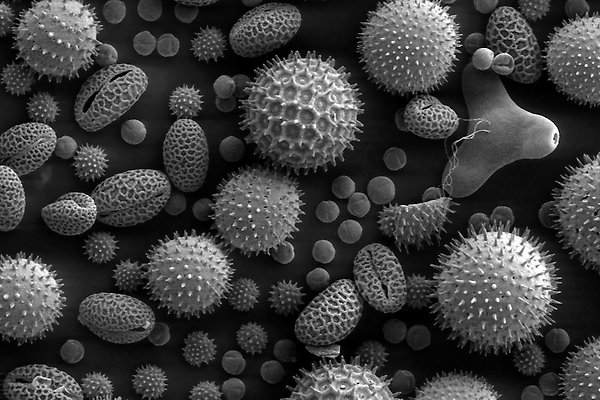
Riksriggen, scientific drilling
Riksriggen is a national research infrastructure for deep drilling that provides a well-equipped drilling rig. The Riksriggen organization assists research groups in issues related to drilling, geological and microbial sampling, geophysical mapping, hydraulic and mechanical tests in boreholes, both operationally and during the planning phase so that the projects can achieve the highest scientific quality. Lund University hosts Riksriggen and the other participating universities are Uppsala University, Luleå University of Technology and Linnaeus University. This research infrastructure is considered by the Swedish Research Council to be of national interest and receives funding from the Swedish Council for Research Infrastructures (RFI).
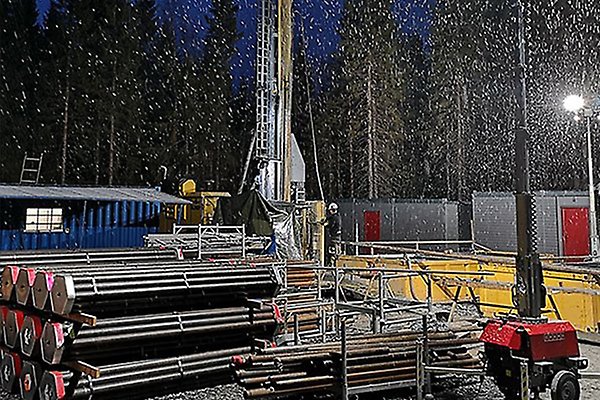
International Ocean Discovery Program (IODP)
Integrated Ocean Discovery Programme (IODP) is an international drilling consortium in which Sweden participates. IODP is an international deep-sea drilling programme exploring the history and dynamics of the Earth using ocean-going research platforms to recover data recorded in seabed sediments and rocks and to monitor seabed environments.
The Council for Research Infrastructures (RFI) funds this research infrastructure, which the Swedish Research Council considers to be in the national interest.
Related information
Contact at Uppsala University
Jorijntje Henderiks, Professor at the Department of Earth Sciences.

The Swedish Scientific Drilling Program (SSDP)
The Swedish Scientific Drilling Program (SSDP) supports Swedish interests in continental and ocean science drilling with emphasis on the Swedish memberships in the International Scientific Drilling Program (ICDP) and the Integrated Ocean Drilling Program/International Ocean Discovery Program (IODP, via the European Consortium for Ocean Research Drilling, ECORD).
Read more about The Swedish Drilling Program

European Consortium for Ocean Research Drilling (ECORD)
ECORD, the European Consortium for Ocean Research Drilling, is a consortium for scientific ocean drilling, as part of the International Ocean Discovery Program (IODP) "Exploring the Earth under the sea" and previously the Integrated Ocean Drilling Program - IODP from 2003 to 2013.
IODP research covers a wide range of fundamental and applied issues for society, such as climate and ocean change, biodiversity and the origin of life, the Earth in motion including studies of earthquake processes, and the structure and dynamics of the Earth in relation to its surface environment.
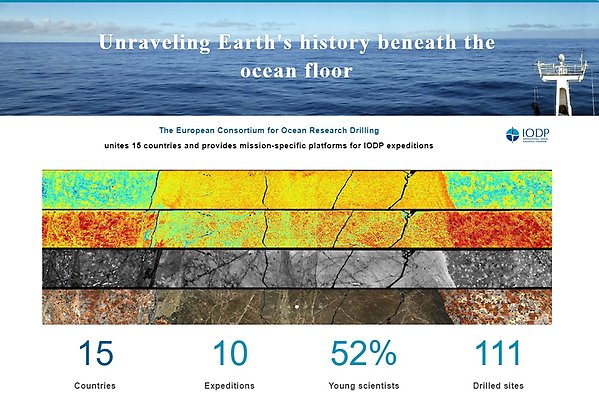
Celsius weather measurements
In Uppsala we have one of the oldest weather measurements in the world, over 300 years of continuous measurements. Weather measurements started in 1722 by Anders Celsius and others, and weather observations continue today at the Department of Geosciences at Uppsala University.
By measuring weather events, we can see how the weather and temperature vary over time, which gives us important pieces of the puzzle when it comes to understanding our current climate.
Contact the person in charge: Erik Sahlée.
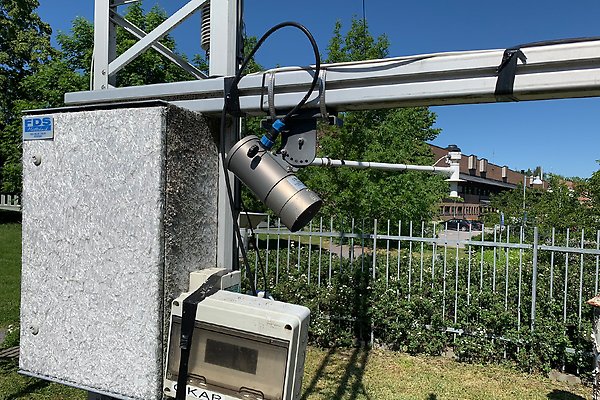
Seismiska nationella seismiska nätet (SNSN)
On behalf of the government, SNSN collects seismological data from earthquakes in Sweden and abroad. These data are used, among other things, to increase knowledge of the ongoing deformation processes in the Swedish crust - e.g. the interaction between continental plate movements and land uplift after the ice sheet - and to study the structure of the crust and the upper mantle.
The swedish national seismic network (SNSN) currently consists of 68 modern broadband seismic stations spread across the country, from Skåne in the south to Lannavaara in Lapland in the north. All stations are connected to a central computer in Uppsala via dial-up modem or internet.

Portable seismographs
To investigate areas with high earthquake activity, or for large-scale structural studies, in addition to permanent seismic stations, it is sometimes necessary to temporarily deploy seismometers to make dense, high-quality measurements. The Geophysics Program has 19 mobile instruments that can measure ground motion down to amplitudes of a few nanometers per second. Applications vary from local studies of "unusual" seismicity, to large projects - national and international - in Sweden and abroad. Examples of areas we have studied are the Pärvi fault in northern Sweden, and the Katla volcano in Iceland.

European Plate Observing System (EPOS)
EPOS is a research infrastructure for scientific data and services related to the solid Earth. By making data widely available, it makes it easy to access data from multiple countries and disciplines in one place, and to combine these data in new ways for innovative research, such as analysis and visualization. This research can be pure curiosity research to better understand why the Earth looks the way it does. In addition, EPOS is important in applied research such as trying to predict future earthquakes, volcanic eruptions and landslides.

International Continental Scientific Drilling Program (ICDP)
The International Continental Scientific Drilling Program (ICDP) is an international drilling consortium in which Sweden participates. ICDP is an international land-based deep drilling program that explores structures, bedrock processes and the geological evolution of our planet, issues that are directly linked to themes of societal relevance, such as sustainable geosources, climate and natural hazards.
Read more about International Continental Scientific Drilling Program (ICDP)

Near-surface geophysics
The closer to the Earth's surface we want to investigate, the more possibilities we have at our disposal. This may seem paradoxical, but it is explained by the fact that the force or wave fields carrying the information from the Earth's interior are attenuated or smoothed out with depth. Thus, most information is available from structures close to the Earth's surface, and so we have the most opportunities to measure near-surface structures. Our instruments range from DC electric instruments, electromagnetic, magnetic, and gravimetric, as well as seismic (e.g. refraction seismic). In addition, we can also make measurements in boreholes.
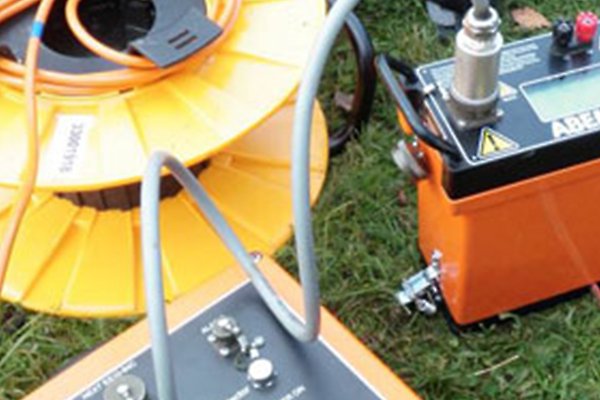
Erken
The Erken Laboratory is a laboratory run by the Department of Ecology and Genetics. The lake has an area of 23.7 km2 and is located 50 km east of Uppsala. On the island of Malma in the eastern part of the lake, the meteorology group at the Department of Earth Sciences operates an instrumented mast. The mast is equipped with instruments to measure how much methane, carbon dioxide, water vapor and heat flow to and from the lake. Additional instruments provide information on weather conditions at the site, i.e. wind speed and direction, air temperature, humidity and air pressure.
See ongoing measurements here.
The laboratory is also part of the Swedish national infrastructure for ecosystem research (SITES).
%20(2)%20Erken_drone_image.JPG)
Marsta
The Marsta Observatory is located in an agricultural area a few kilometers north of Uppsala. Meteorological measurements have been made here since the late 1940s. The current measurements are mainly made from a 30 m high mast. The mast contains instruments that measure temperature and wind at several altitudes, humidity, air pressure and air turbulence measurements. This includes measurements of how much water vapor, heat and carbon dioxide is absorbed or emitted from the surrounding landscape. In addition, we measure the ground temperature and how much precipitation falls. On a dedicated platform, we measure solar and terrestrial radiation.
See current measurements here.
The site is also equipped with several groundwater pipes and is the site of air quality measurements for SLB-analysis together with the Östra Sveriges Luftvårdsförbund.
%20(2)%20(2)%20(2)%20c_913188-l_3-k_marsta-1.jpg)
Brief history of Marsta
The Marsta Observatory was built in 1947 on the initiative of Hilding Köhler (Professor of Meteorology at Uppsala University 1936-1958). One of the aims was to research the importance of air turbulence, known as micrometeorology. The observatory was also the background reference for various studies in the late 1960s and early 1970s on how cities affect the atmosphere.
In 1960, Professor Gösta H. Liljequist started measurements of atmospheric electricity in the lower atmosphere and above using balloon measurements up to 10-20 km in Marsta. At the same time, research was also carried out on β-radioactivity in the atmosphere. The results provided a valuable glimpse of the effects of nuclear tests in the 1960s on atmospheric radioactivity.
Reference:
Martinsson, A. (1976). Faculty of Science at Uppsala University: Earth and Life Sciences. Uppsala: Uppsala University.
Östergarnsholm
On the island Östergarnsholm located about 2 nautical miles off the east coast oof Gotland a 30 m micrometeorological tower was established in 1995 on the most southern tip of the island. The measurement station consists of anemometers, temperature and humidity sensors as well as sophisticated instrumentation for measuring gas exchange of carbon dioxide and other scalars between the sea and the atmosphere.
Here you can see a film of climbing the 30 metre mast taken from drones and a GoPro camera.
In addition to measurements in the mast, the conditions in the water are also measured with several types of instruments as part of Östergarnsholm's field station becoming part of the Integrated Carbon Observation System (ICOS) in 2015 as a Fixed Ocean Station (FOS). The purpose of this Swedish marine ICOS station is to collect data to study processes that control how the ocean and atmosphere interact and exchange gases between them.
The ICOS station at Östergarnsholm acts as a unique marine measurement site open to researchers from Europe and other parts of the world to come and visit and perform measurements with their own instruments. An example of the use of the station's infrastructure was in connection with measurements of gas exchange of mercury between sea and atmosphere from which the picture below was taken of the 30 m measuring mast below and a 10 m measuring mast operated by Stockholm University for exchange as aerosols. Since the station's establishment, a long-term collaboration between Uppsala University and the Finnish Meteorological Institut(FMI) has also been carried out with studies of ocean surface waves in the Baltic Sea with measurements from a wave buoy located approximately 4 km from the field station.
The station operated by Uppsala University is used in connection with a number of associated or independent surveys where a number of different measurement techniques have been used for specific field visits or for semi-continuous or more continuous measurements. These include radiosoundings and drone measurements , water sampling and analysis of carbon dioxide and methane, measurements of currents, turbulence and waves with Acoustic Doppler Current Profiles (ADCP) , wind profiles and turbulence up to about 250 m altitude with wind lidar, precipitation and droplet size distributions with distrometer and clouds using ceilometer.
Here you can read even more about Östergarnsholm; the infrastructure, measurements and the climate
%20(2)%20(2)%20Figur2_View_%C3%96stergarnsholm_photo_by_Stefan_Osterwalder.jpg)
Den 30 meter höga mätmasten drivs sedan 1995 av Uppsala Universitet. Ett mindre torn på 10 meter instrumenterat för studier av aerosoler och hav-atmosfärsutbyte drivs av Stockholms Universitet.
%20(2)%20Figur4_water_sample_work.jpg)
Forskare och doktorander genomför analyser av vattenprover tagna på mätplatsen för att kvantifiera och validera uppmätta koncentrationer av koldioxid och metan i Östersjön
%20(2)%20dubbelbild2.png)
Fotot till vänster visar ett vind lidar instrument som mäter både medelvind och turbulens i atmosfären. Fotot till höger visar en molnhöjdmätare som mäter molnighet och hydrometeorer upp till 6500 m.
%20(3)%20Figur7_distrometer.jpg)
Foto av distrometern som mäter nederbörd och droppstorleksfördelningar.
Water measurements in Fyrisån
In cooperation with Uppsala municipality and Uppsala vatten och avfall AB, the Department of Geosciences is responsible for water level measurements using a measuring station at Islandsbron in Uppsala. Based on the water level, water flow in Fyrisån is calculated. Water temperature and electrical conductivity are also measured here.
20 meters upstream of Islandsfallet, a Keller CTD sensor has been installed to measure water level, water temperature and electrical conductivity. A Campbell CS451 pressure sensor has also been installed downstream of Islandsfallet to measure the water level in the harbor. The sensors have been connected to a Campbell CR-1000X data logger that stores measurement data and sends data to the server at the Department of Geosciences.
The measurements are used by Uppsala Municipality and Uppsala County Administrative Board, among others.
Link to the latest and historical measurements.

20 meter uppströms Islandsfallet har en Keller CTD-givare installerats för mätning av vattennivå, vattentemperatur samt vattnets elektriska konduktivitet. En Campbell CS451 tryckgivare har även installerats nedströms Islandsfallet för att mäta vattennivån i hamnen. Givarna har kopplats till en Campbell CR-1000X datalogger som lagrar mätdata samt skickar data till servern vid Institutionen för geovetenskaper
Ramanspektroskopi-laboratoriet
The laboratory comprises two cutting-edge portable Raman systems. Raman spectroscopy can be used in numerous geological and environmental studies.
For more information please contact Peter Lazor or Iwona Klonowska.

Electron Probe Microanalyzer
We operate a Field Emission Electron Probe Microanalyzer, a JXA-8530F JEOL HyperProbe, which is coupled with five wavelength dispersive spectrometers (WDS), secondary and backscattered electrons detectors, cathodoluminescence detector (CL). The microprobe analytical capabilities cover elements from Beryllium to Uranium, which makes about 90 % the periodic table. The instrument was funded by the Knut and Alice Wallenberg Foundation. If you are interested in using the machine, please contact Daniel Buczko.

